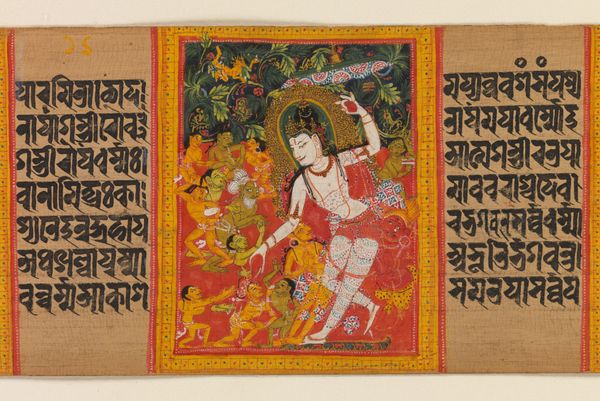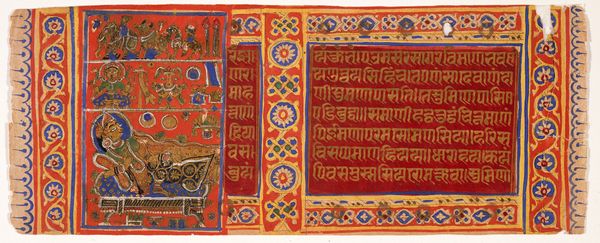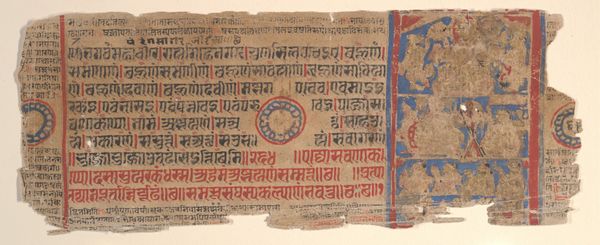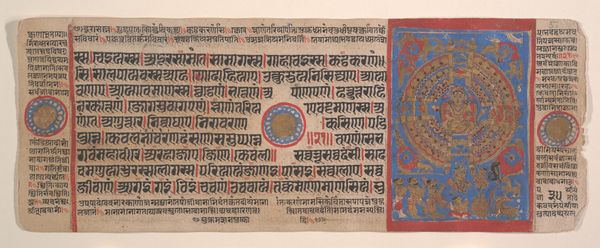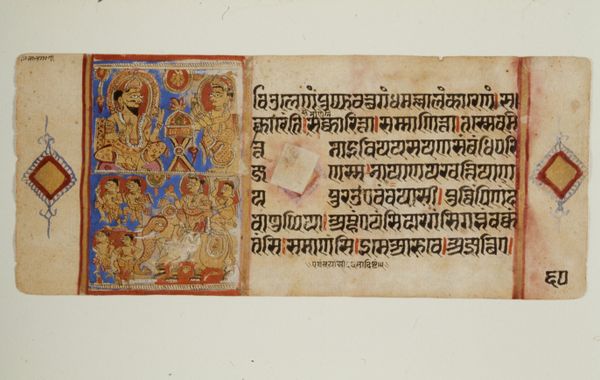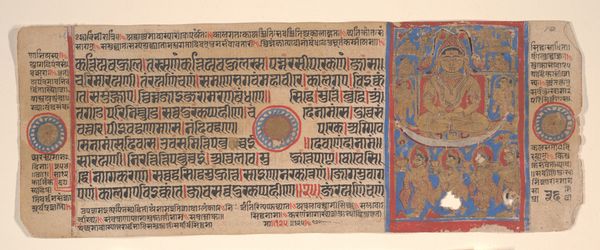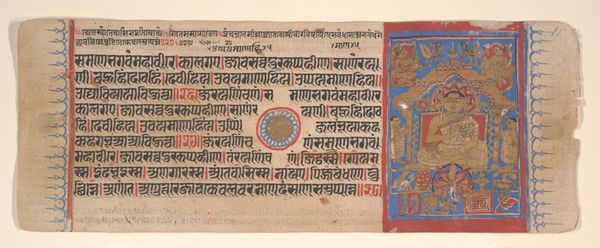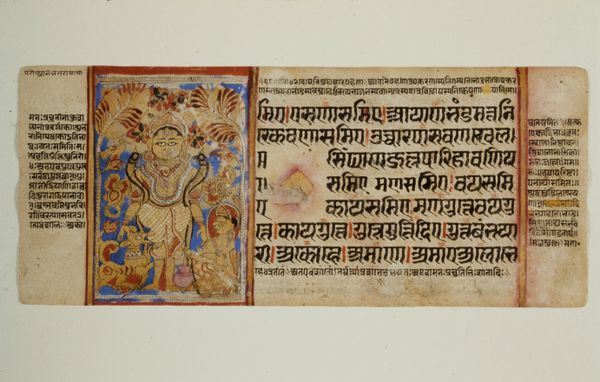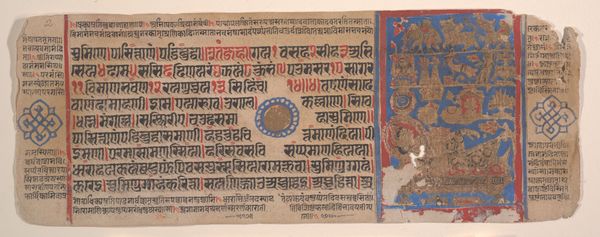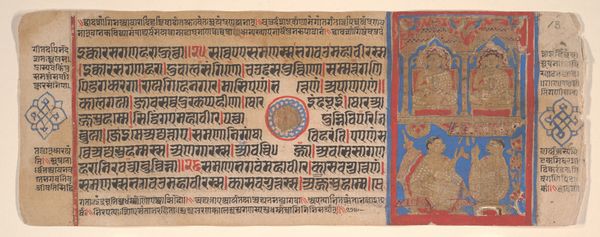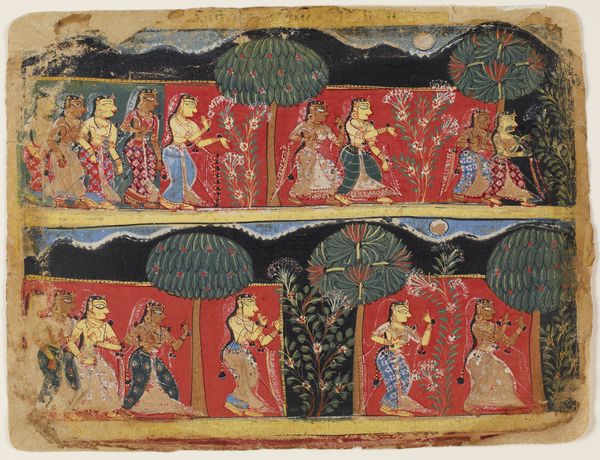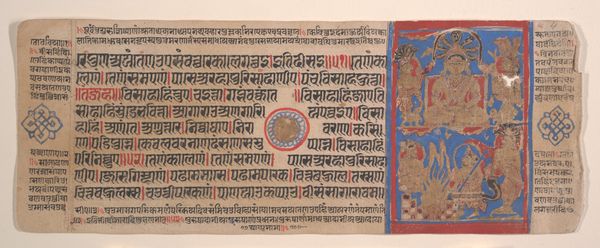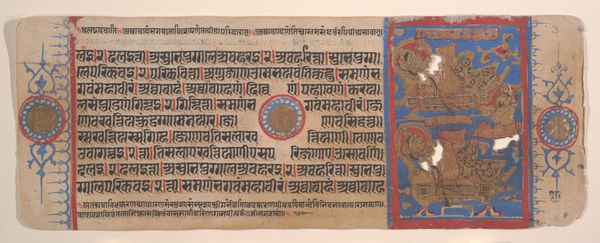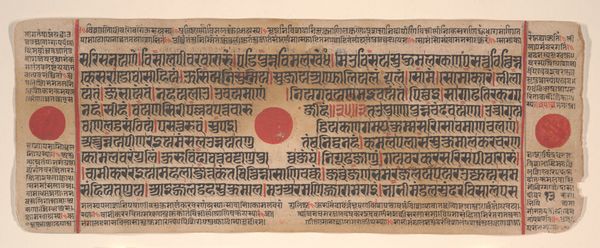
Leaf from a Gandavyuha Manuscript late 11th-early 12th century
0:00
0:00
painting, paper, ink
#
medieval
#
narrative-art
#
painting
#
asian-art
#
painted
#
paper
#
ink
#
miniature
Dimensions: 2 x 21 13/16 in. (5.08 x 55.4 cm)
Copyright: Public Domain
This leaf from a Gandavyuha manuscript presents us with a painted image and text, illustrating a scene of profound religious significance. The central figure, painted with vibrant colors, embodies a deity or celestial being, set against a blue background. Consider the "wandering god" motif, an archetype present in different cultures. We see it in the Greek Dionysus, whose ecstatic dance parallels the dynamic pose of the figure in our manuscript. This image, much like Dionysus' revelry, evokes a sense of spiritual movement and transformation. It stirs something primal within us, tapping into archetypes of transcendence. The gesture is not merely aesthetic; it's a visual embodiment of the soul's journey towards enlightenment, a concept echoed across cultures and epochs. It appears, vanishes, and reappears across the centuries, each time subtly altered by the cultural soil in which it takes root. These images are palimpsests of the collective unconscious, endlessly re-inscribed with the hopes, fears, and spiritual longings of humanity.
Comments
minneapolisinstituteofart almost 2 years ago
⋮
This palm leaf manuscript page was once part of a larger manuscript called the Gandavyuha, which told the tale of Sudhana, a young pilgrim who seeks out multiple teachers in an effort to attain enlightenment. Sudhana is depicted by a tree against a stippled blue background on his way to visit a guru. The painting style reveals connections with northeast India, likely indexing the migration of Indian monks to monasteries in the Himalayas, which occurred on a large scale between the 11th and 13th centuries. The manuscript consisted of a stack of multiple leaves bound together through the two holes at the center, and would have been easy to transport. This leaf is one of the oldest extant examples of South Asian manuscript painting.
Join the conversation
Join millions of artists and users on Artera today and experience the ultimate creative platform.
